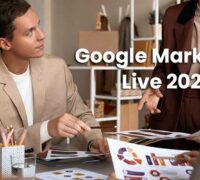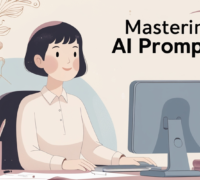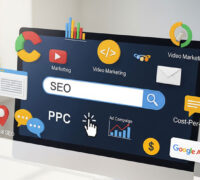The event of Google Marketing Live 2025 was a transformative moment in the realm of digital marketing. Held in May, this much-anticipated annual event brought together advertisers, developers, and marketing professionals from around the globe to witness the unveiling of Google’s latest innovations. The primary focus this year was the integration of generative AI, performance automation, and privacy-first advertising strategies—all aimed at helping marketers grow in a rapidly changing ecosystem.Held in May, this much-anticipated annual event brought together advertisers, developers, and marketing professionals from around the globe to witness the unveiling of Google’s latest innovations. The primary focus this year was the integration of generative AI, performance automation, and privacy-first advertising strategies—all aimed at helping marketers grow in a rapidly changing ecosystem.
A New Era of Generative AI in Ads
One of the most groundbreaking announcements at Google Marketing Live 2025 was the deeper integration of generative AI within Google Ads. Advertisers can now create full ad campaigns in a matter of minutes using natural language prompts. Powered by Google’s Gemini AI model, this technology allows marketers to input a few key ideas, after which AI automatically generates keyword suggestions, headlines, descriptions, creatives, and even landing page content tailored to campaign objectives.
This innovation significantly reduces the time and effort involved in launching effective ad campaigns. By allowing AI to do the heavy lifting, businesses—especially small and mid-sized ones—can now compete with enterprise-level advertisers without needing large creative teams.
Performance Max Becomes Smarter and More Intuitive
Performance Max campaigns received a major overhaul with the help of AI advancements. In 2025, Google introduced “AI Essentials” for Performance Max, which includes dynamic asset generation, predictive targeting, and real-time budget optimization. These updates mean advertisers no longer have to rely heavily on manual inputs or rigid targeting structures.
The new interface of Performance Max allows marketers to visualize their campaign flow, get proactive suggestions from AI, and monitor projected outcomes before committing to ad spend. This transparency not only improves campaign performance but also boosts advertiser confidence in automation-driven solutions.
Enhanced Search and Shopping Ads with Visual Immersion
Search is no longer just about text and keywords—Google Marketing Live 2025 revealed a shift toward visual-first experiences. With the increasing influence of platforms like TikTok and Instagram, Google has responded by revamping Search and Shopping Ads with more immersive, visual formats. These include AI-generated product imagery, interactive 3D models, and augmented reality previews right within the search results.
For e-commerce brands, this development is a game-changer. Shoppers can now “try before they buy” using AR, compare similar products visually, and receive personalized recommendations in the form of interactive carousels. The result is a richer and more engaging shopping experience, leading to higher conversion rates for advertisers.
YouTube Ads Evolve with AI-Powered Creativity
Google also emphasized the importance of video in 2025’s marketing landscape. YouTube Ads, particularly Shorts and in-stream formats, are now more AI-powered than ever. With the new “Video Essentials” toolkit, advertisers can quickly create multiple variations of a video ad tailored to different audience segments.
AI helps in optimizing everything from background music and voiceovers to pacing and text overlays, depending on viewer behavior. The platform also introduced a new format—YouTube Spotlight Ads—that dynamically highlight trending topics and brand-relevant themes to maximize audience engagement. These updates allow brands to maintain relevance and creative freshness at scale.
Embracing Privacy-Centric Marketing
As third-party cookies continue to phase out across browsers, privacy and consent have become focal points for Google’s ad platforms. Google Marketing Live 2025 reaffirmed its commitment to building a privacy-first advertising ecosystem. The introduction of Privacy Sandbox APIs across Search, Display, and YouTube is designed to ensure that user data remains protected while still enabling meaningful advertising outcomes.
Additionally, Google’s enhanced Consent Mode now includes predictive modeling for users who decline cookies, enabling advertisers to fill in performance gaps using machine learning. This balance between personalization and privacy is set to redefine how advertisers build trust with their audiences while achieving business results.
First-Party Data and Customer Match Innovations
Another major theme of the event was the increasing value of first-party data. Google introduced improved integrations between Google Ads and Customer Data Platforms (CDPs), making it easier to use CRM data for audience targeting, bid strategies, and creative customization.
With the help of AI, advertisers can now better segment their customer lists, predict lifetime value, and automate message delivery across Google properties. This allows for hyper-personalized campaigns without compromising on user privacy. Google also announced new analytics tools that help brands measure customer journey touchpoints more accurately.
AI-Driven Creative Studio for Brands and Agencies
To empower creative professionals, Google launched the AI Creative Studio. This new suite allows advertisers and agencies to generate ad creatives in various formats—including display banners, responsive search ads, and YouTube video clips—using a unified platform powered by AI.
Users can input brand guidelines, voice tone, target audience traits, and campaign goals, and the AI generates assets that remain brand-consistent. The tool also includes A/B testing capabilities, allowing marketers to quickly identify which creative elements resonate most with different audiences. For creative teams, this means reduced turnaround times and more time for strategic planning.
Smart Campaigns Get Smarter for SMBs
Google also showcased major improvements to Smart Campaigns tailored specifically for small businesses. Using conversational prompts, business owners can now generate full campaign setups—including location targeting, copywriting, and even visuals—directly from the Google Business Profile.
Smart Campaigns now incorporate industry-specific templates, AI-curated ad examples, and localized targeting features, making digital advertising more accessible to non-marketers. Google’s goal here is clear: democratize advertising tools so that every business, regardless of size, can thrive online.
Future-Proof Measurement with AI Insights
Measurement has always been a core challenge for digital marketers. At Google Marketing Live 2025, new insights tools were introduced that use AI to provide predictive analytics, explain campaign performance variances, and suggest optimizations before issues arise.
These insights go beyond basic metrics and offer strategic guidance. For example, if conversions dip due to seasonal changes, the AI will proactively recommend shifting budget, refreshing creative, or targeting new audience segments. This level of foresight helps marketers stay ahead of trends and respond to changes with precision.
Conclusion: Redefining What’s Possible in Digital Advertising
Google Marketing Live 2025 painted a clear picture of where digital marketing is headed—a world where creativity is amplified by AI, where campaigns are smarter and more intuitive, and where privacy is respected without sacrificing performance. From small business owners to global brands, every advertiser stands to benefit from the innovations announced this year.
As Google continues to integrate AI into every facet of its advertising ecosystem, marketers must adapt, learn, and leverage these tools to remain competitive. The future of advertising is no longer about guessing what might work—it’s about letting data and AI guide decisions while human creativity brings campaigns to life. With these tools now at their fingertips, advertisers are better equipped than ever to build meaningful connections with customers in a rapidly evolving digital world.










